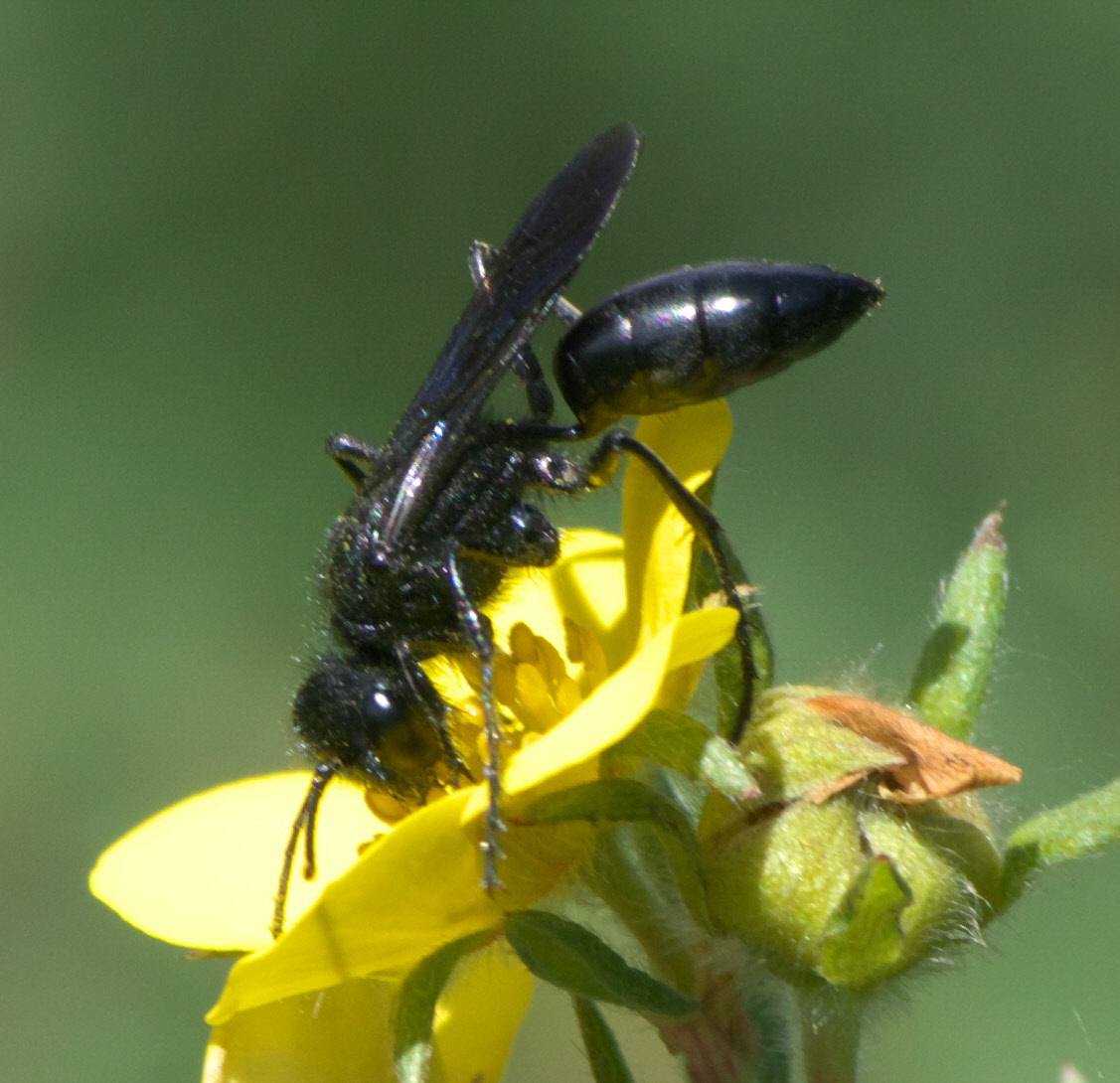|
Mellininae
Mellininae is a very small subfamily of wasps, comprising only 17 described species in two genera. Occasionally this group has been treated as a separate family (Mellinidae), but has been more typically considered a subfamily within the all-inclusive family Sphecidae The Sphecidae are a cosmopolitan family of wasps of the suborder Apocrita that includes sand wasps, mud daubers, and other thread-waisted wasps. The name Sphecidae was formerly given to a much larger grouping of wasps. This was found to be .... References Catalog of Sphecidae that includes Mellininae, at Cal Academy Crabronidae Apocrita subfamilies {{apoidea-stub ... [...More Info...] [...Related Items...] OR: [Wikipedia] [Google] [Baidu] |
Crabronidae
The Crabronidae are a large paraphyletic group (nominally a family) of wasps, including nearly all of the species formerly comprising the now-defunct superfamily Sphecoidea. It collectively includes well over 200 genera, containing well over 9000 species. Crabronids were originally a part of Sphecidae, but the latter name is now restricted to a separate family based on what was once the subfamily Sphecinae. Several of the subfamilies of Crabronidae are often treated as families in their own right, as is true of the most recent phylogenies (example below). Phylogeny This phylogenetic tree is based on Sann ''et al.'', 2018, which used phylogenomics to demonstrate that both the bees (Anthophila) and the Sphecidae arose from within the former Crabronidae, which is therefore paraphyletic, and which they suggested should be split into several families; the former family Heterogynaidae nests within the Bembicidae, as here defined. These findings differ in several details from studie ... [...More Info...] [...Related Items...] OR: [Wikipedia] [Google] [Baidu] |
Sphecidae
The Sphecidae are a cosmopolitan family of wasps of the suborder Apocrita that includes sand wasps, mud daubers, and other thread-waisted wasps. The name Sphecidae was formerly given to a much larger grouping of wasps. This was found to be paraphyletic, so most of the old subfamilies have been moved to the Crabronidae. Biology The biology of the Sphecidae, even under the restricted definition, is still fairly diverse; some sceliphrines even display rudimentary forms of sociality, and some sphecines rear multiple larvae in a single large brood cell. Many nest in pre-existing cavities, or dig simple burrows in the soil, but some species construct free-standing nests of mud and even (in one genus) resin. All are predatory and parasitoidal, but the type of prey ranges from spiders to various dictyopterans, orthopteroids and larvae of either Lepidoptera or other Hymenoptera; the vast majority practice mass provisioning, providing all the prey items prior to laying the egg. Phylo ... [...More Info...] [...Related Items...] OR: [Wikipedia] [Google] [Baidu] |
Mellinus Arvensis
Mellinus arvensis, the field digger wasp, is a species of solitary wasp. The wasp can commonly be found from July to late September or October in sandy places. In hard soil however the female will often try to steal a nest from another member of the same species. The female is larger than the male. The wasps' nests are underground in sandy burrows with flies for their offspring to eat. The species is yellow and black like many wasp species, but they have a more narrow waist. This species is the most dominant immediately following forest fires A wildfire, forest fire, bushfire, wildland fire or rural fire is an unplanned, uncontrolled and unpredictable fire in an area of combustible vegetation. Depending on the type of vegetation present, a wildfire may be more specifically identif .... References Sphecidae Hymenoptera of Europe Taxa named by Carl Linnaeus Wasps described in 1758 {{apoidea-stub ... [...More Info...] [...Related Items...] OR: [Wikipedia] [Google] [Baidu] |
Mellinus
''Mellinus'' is a genus of wasps in the family Crabronidae. The species are found in the Palearctic, Nearctic, the Neotropics and the Orient. 16 species are known Species (Europe) *''Mellinus arvensis'' (Linnaeus, 1758) *'' Mellinus crabroneus'' (Thunberg, 1791) Species (worldwide) These 16 species belong to the genus ''Mellinus'': * '' Mellinus abdominalis'' Cresson, 1882 * '' Mellinus alpestris'' Cameron, 1890 * '' Mellinus andinus'' Menke, 1996 * ''Mellinus arvensis'' (Linnaeus, 1758) * '' Mellinus bimaculatus'' Packard, 1867 * '' Mellinus costaricae'' (R. Bohart, 2000) * '' Mellinus crabroneus'' (Thunberg, 1791) * '' Mellinus globulosus'' (Fourcroy, 1785) * '' Mellinus hansoni'' Menke, 1996 * '' Mellinus iani'' Menke, 1996 * '' Mellinus imperialis'' R. Bohart, 1968 * '' Mellinus obscurus'' Handlirsch, 1888 * '' Mellinus orientalis'' S. Gupta, Gayubo and Pulawski, 2008 * '' Mellinus pygmaeus'' Handlirsch, 1888 * '' Mellinus rufinodus'' Cresson, 1865 * '' Mellinus satan ... [...More Info...] [...Related Items...] OR: [Wikipedia] [Google] [Baidu] |
Wasp
A wasp is any insect of the narrow-waisted suborder Apocrita of the order Hymenoptera which is neither a bee nor an ant; this excludes the broad-waisted sawflies (Symphyta), which look somewhat like wasps, but are in a separate suborder. The wasps do not constitute a clade, a complete natural group with a single ancestor, as bees and ants are deeply nested within the wasps, having evolved from wasp ancestors. Wasps that are members of the clade Aculeata can Stinger, sting their prey. The most commonly known wasps, such as yellowjackets and hornets, are in the family Vespidae and are Eusociality, eusocial, living together in a nest with an egg-laying queen and non-reproducing workers. Eusociality is favoured by the unusual haplodiploid system of sex-determination system, sex determination in Hymenoptera, as it makes sisters exceptionally closely related to each other. However, the majority of wasp species are solitary, with each adult female living and breeding independently ... [...More Info...] [...Related Items...] OR: [Wikipedia] [Google] [Baidu] |


%2C_Arnhem%2C_the_Netherlands_-_2.jpg)